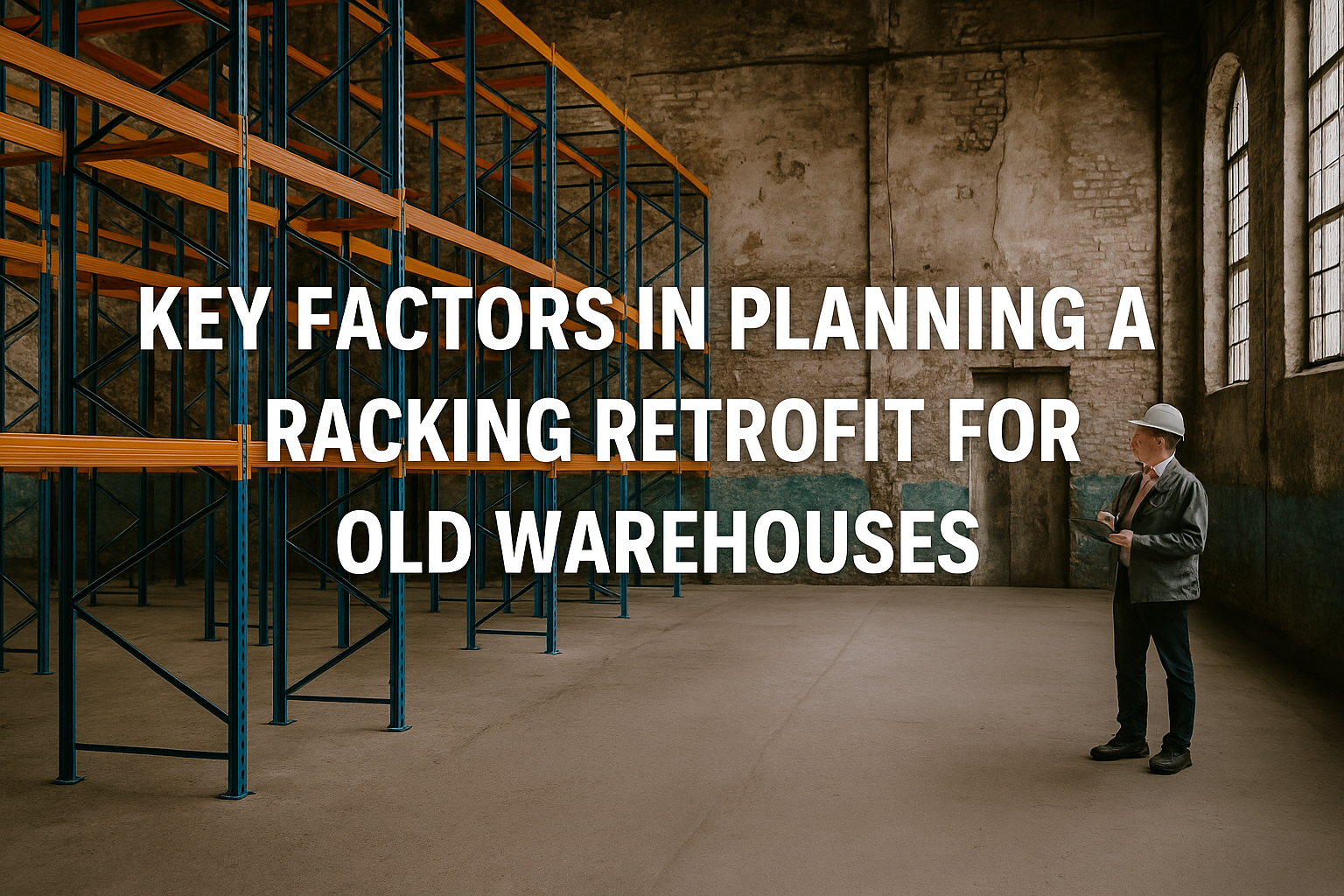
Warehouses in Dubai are constantly evolving to meet the demands of a fast-paced logistics sector. As businesses grow, many older warehouses face capacity, safety, and operational inefficiencies. A racking retrofit the process of upgrading or replacing outdated racking systems can significantly enhance storage capabilities without the cost and downtime of relocating.
In this article, we’ll explore the key factors to consider when planning a racking retrofit for older warehouses in the UAE.
1. Conduct a Comprehensive Structural Assessment
Before any retrofit project begins, conduct a thorough evaluation of the warehouse structure.
- Assess flooring load capacity and slab integrity.
- Identify structural columns, ceiling height, and potential obstructions.
- Verify compliance with Dubai Municipality safety codes for load-bearing capacity.
2. Evaluate Current and Future Storage Needs
A successful retrofit is future-proof. Consider:
- SKU growth projections to determine the type and volume of racking required.
- Changes in order profiles e.g., e-commerce fulfillment may require faster picking and high-density storage.
- Seasonal fluctuations and scalability options.
3. Maximize Vertical Space
Older warehouses often underutilize cubic storage capacity.
- Upgrade to taller, high-density racking systems where ceiling height permits.
- Install mezzanine floors to add new levels without expanding the building footprint.
4. Prioritize Safety and Compliance
Retrofitting an older warehouse must meet current UAE fire safety and load regulations.
- Implement anti-collapse mesh and guard rails.
- Plan for safe aisle spacing for forklifts and pedestrian movement.
- Schedule routine inspections and load testing to ensure ongoing compliance.
5. Minimize Operational Downtime
Retrofits can disrupt operations if not carefully managed.
- Opt for phased installation to keep parts of the warehouse functional.
- Use modular racking that can be assembled quickly with minimal disruption.
- Schedule work during low-demand periods to reduce productivity loss.
6. Integrate Modern Technology
A retrofit is an opportunity to bring in automation and smart racking systems:
- Consider AS/RS (Automated Storage and Retrieval Systems) for faster picking.
- Install sensors for real-time inventory tracking and predictive maintenance.
- Use data analytics to optimize racking layouts for efficiency.
7. Cost-Benefit Analysis
While retrofitting is often more affordable than moving or rebuilding, conduct a comprehensive ROI analysis:
- Compare the cost of retrofitting with potential savings in operational efficiency and storage capacity.
- Factor in long-term benefits such as reduced maintenance and lower labor costs.
facts
A well-planned racking retrofit can transform an aging warehouse into a modern, high-efficiency storage facility. By addressing structural limitations, safety, future growth, and operational continuity, businesses in Dubai can achieve a cost-effective upgrade that meets today’s demanding logistics environment.
A retrofit is often more cost-effective, faster, and minimizes operational downtime compared to relocating or constructing a new facility.
Timelines vary depending on the warehouse size and complexity, but phased installations can keep operations running with minimal delays.
Yes, but a structural assessment must confirm the flooring and building integrity before installation.
Absolutely. Retrofit projects must meet current Dubai Municipality and Civil Defense standards for safety and load-bearing capacity.
ROI should account for increased storage capacity, improved efficiency, reduced operational costs, and extended warehouse usability.